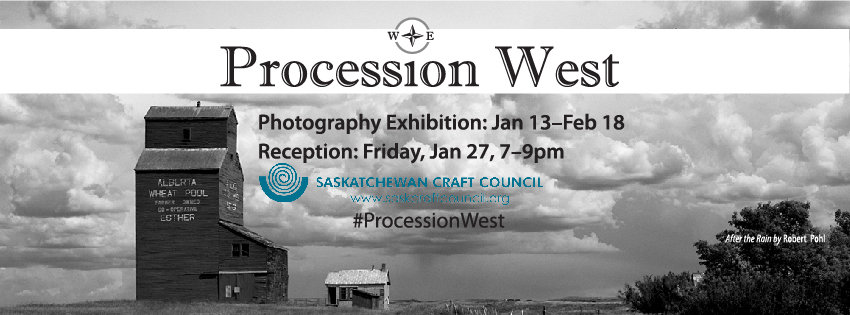Written by: Robert S. Pohl, photographer with work in Procession West
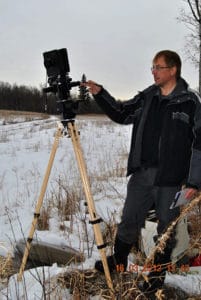 For me, there is more than one answer, so allow me to explain. I have been making photographs for about 40 years and it has always been a passion of mine. Obviously my work has evolved and I have a much better eye for composition now, as compared to when I was starting out. Over a decade ago digital photography became the main stream and traditional film based methods were left by the wayside. I have remained on the wayside, and I like it, as it is much quieter here.
For me, there is more than one answer, so allow me to explain. I have been making photographs for about 40 years and it has always been a passion of mine. Obviously my work has evolved and I have a much better eye for composition now, as compared to when I was starting out. Over a decade ago digital photography became the main stream and traditional film based methods were left by the wayside. I have remained on the wayside, and I like it, as it is much quieter here.
During the day I have spent my 35+ year working career managing my small business. My days are filled keeping the operation running as smoothly as possible. Time demands are high and I find myself being pulled in many different directions all at the same time A great deal of my time is spent sitting at a computer monitor. To escape that and to relax I have found myself making photographs. It is a very creative process and the experience is very different from the technical, fast-paced world of business. Working with a large format film camera is a very methodical and contemplative process that forces me to slow down. Mostly I just enjoy being out in the world, exploring and looking for images. The photographs are a byproduct of that exploration. Sometimes I return home with something exceptional, and other times I come home empty handed.
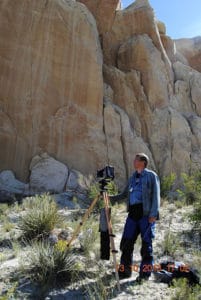 Although I have an appreciation for portraits, urban landscapes, and documentary photography, I personally am drawn to landscapes, details and historical remains of “things” left behind by people. As I result I need to escape the city when I am out making photographs. Often this involves a walk, or even a longer hike. Large format cameras are bulky and heavy. My kit varies depending on what I expect to be shooting, and how far I have to carry it. A light pack for a longer hike would include the camera, four or five lenses, tripod, a half dozen film holders, and a few odds and ends. This typically would weigh about 30 lbs. If the walk is less strenuous then I will add more lenses and film holders to the pack, sometimes doubling that weight. So it ends up being good exercise and helps to keep me in shape. Some of the best photographs are found during periods of inclement weather so I find myself heading out at all times of the year and in all sorts of conditions. There are no delicate electronics to be found in a view camera so mine has been wind whipped, wet, frozen and snow covered on many occasions.
Although I have an appreciation for portraits, urban landscapes, and documentary photography, I personally am drawn to landscapes, details and historical remains of “things” left behind by people. As I result I need to escape the city when I am out making photographs. Often this involves a walk, or even a longer hike. Large format cameras are bulky and heavy. My kit varies depending on what I expect to be shooting, and how far I have to carry it. A light pack for a longer hike would include the camera, four or five lenses, tripod, a half dozen film holders, and a few odds and ends. This typically would weigh about 30 lbs. If the walk is less strenuous then I will add more lenses and film holders to the pack, sometimes doubling that weight. So it ends up being good exercise and helps to keep me in shape. Some of the best photographs are found during periods of inclement weather so I find myself heading out at all times of the year and in all sorts of conditions. There are no delicate electronics to be found in a view camera so mine has been wind whipped, wet, frozen and snow covered on many occasions.
The other part of the equation that I find really enjoyable and relaxing is the darkroom. Unlike digital photographers I have no way to preview my images out in the field. The film holders are brought back home and unloaded in the darkroom. It is often months and even years later before I get around to processing that film. I experiment with a lot of different film and developer combinations, and even mix some of my own solutions from bulk chemistry. I save up the film until I have a large enough batch of a given combination, to justify setting up for processing. A friend once described the darkroom as having a rhythm. I find that to be a very accurate description. It is a very slow paced and relaxed rhythm that allows me to immerse myself into the mechanics and the chemistry of the process. Different developers and techniques will yield a slightly different look in the negative. These decisions are made at the time that the image is taken, and recorded in the field notes. The decision is based upon the subject matter, the desired look of the finished image, and the lighting conditions. There is something very magic about turning on the lights, pulling a freshly processed negative out of the tank, and seeing that image for the first time.
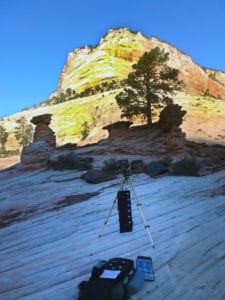 Still later, a select few of the very best images are brought back into the darkroom for printing. Various techniques during the printing process include masking, contrast adjustments, burning and dodging, etc. and afford precise control over the final look of the print. The magic is repeated for a second time when that print initially emerges in a tray of developer, and is seen under the safe light as a positive, for the first time.
Still later, a select few of the very best images are brought back into the darkroom for printing. Various techniques during the printing process include masking, contrast adjustments, burning and dodging, etc. and afford precise control over the final look of the print. The magic is repeated for a second time when that print initially emerges in a tray of developer, and is seen under the safe light as a positive, for the first time.
Weekends and holiday time are generally spent exploring and photographing. Evenings and weekends and cold winter days are spent in the darkroom working on the resulting negatives and prints. This whole process of exploration and discovery, capture of the image, developing of the film, and printing of the final image is very removed from the digital world. I spend far too much time staring at a computer monitor during my work day and if I had to spend my leisure time doing that as well I don’t think I could enjoy it.
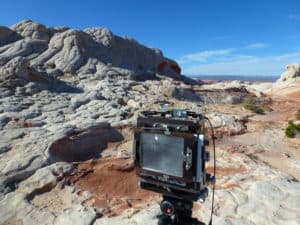 This artistic endeavor is undertaken purely for personal and somewhat selfish reasons. I have never intended for it to become a career or an income stream as I think that would impact my enjoyment of it. That said, I have accumulated a lot of really strong images over the years and some time ago came to the realization that it was a shame just to file them away. So I have pursued some opportunities to exhibit my work and share my vision with others. Mostly this is simply to determine whether or not I can invoke some sort of emotional response in the viewer. Undoubtedly the viewers response will be different from my own. Mine is based on my recollection of being there at the time the image was taken, while the viewer is simply responding to what I presented on a sheet of photographic paper, and accented with the presentation of overmat and frame. I must say that I find it satisfying when my work is well received and that is simply a fringe benefit of this whole process that I immensely enjoy.
This artistic endeavor is undertaken purely for personal and somewhat selfish reasons. I have never intended for it to become a career or an income stream as I think that would impact my enjoyment of it. That said, I have accumulated a lot of really strong images over the years and some time ago came to the realization that it was a shame just to file them away. So I have pursued some opportunities to exhibit my work and share my vision with others. Mostly this is simply to determine whether or not I can invoke some sort of emotional response in the viewer. Undoubtedly the viewers response will be different from my own. Mine is based on my recollection of being there at the time the image was taken, while the viewer is simply responding to what I presented on a sheet of photographic paper, and accented with the presentation of overmat and frame. I must say that I find it satisfying when my work is well received and that is simply a fringe benefit of this whole process that I immensely enjoy.

